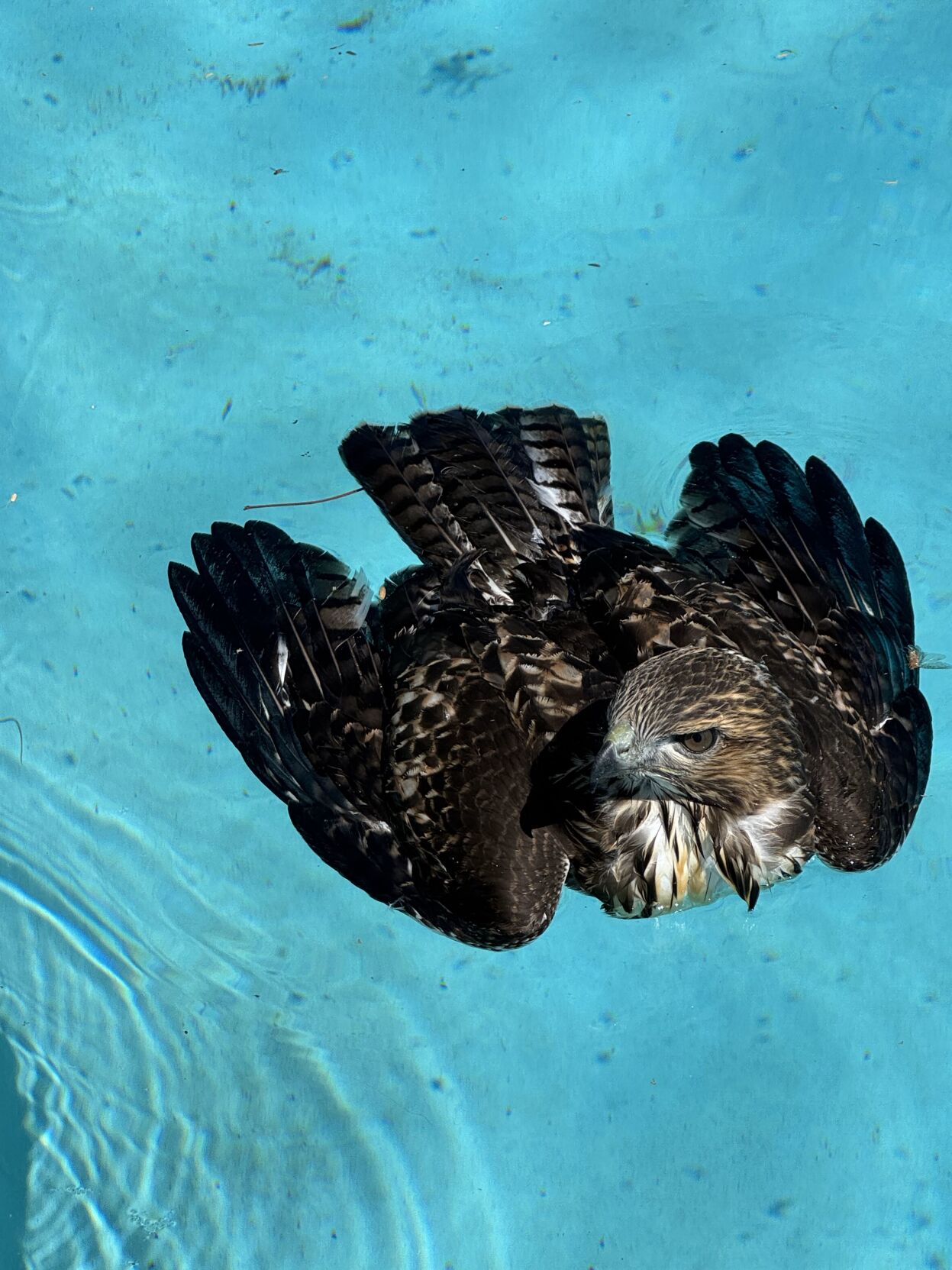You know it’s hot out when even the hawks are taking bird baths in backyard pools.
The family of David McCumber, the Arizona Daily Star’s executive editor, had a surprise visitor Wednesday morning: a Cooper’s hawk that made himself at home by taking a dip in the pool at their home in the Picture Rocks area of Tucson, near Saguaro National Park West.

This Cooper’s hawk cooled off Wednesday in a swimming pool in the Picture Rocks area.
According to Arizona Game & Fish Urban Wildlife Specialist Locana De Souza, even hardened desert dwellers occasionally need cooling relief and a drink of water, and will often seek out the water sources available to them in Tucsonans’ yards.
“A lot of our critters certainly have special adaptations to live in such an arid environment and don’t rely on free water, because obviously, there’s not a lot of free water in the desert. However, water is an extremely important resource, so when it’s available, wildlife are going to use it. That’s everything from birds to snakes to all of our common mammals,” De Souza said. “I haven’t heard of them in a swimming pool before, but, hey, it’s available, right?”
Birds like the Cooper’s hawk frequently use water for various reasons, including temperature control and ridding themselves of parasites, so De Souza said she wasn’t surprised one made its way into the McCumbers’ pool.
“Obviously, they drink it, but they also use it to keep themselves clean, and they use it to keep themselves cool,” De Souza said. “Even just standing in water can be a way that they can cool themselves down.”
However, if you provide water, she said, then expect that you’re going to have all kinds of critters.
“I think sometimes people think, ‘oh, I’ll put water out for my quail’ and then the next thing, there’s a mountain lion drinking there, right?” De Souza said. “Another note of caution is that people who do maintain waters for wildlife — you want to make sure to clean them out fairly frequently, because they can harbor pathogens.”
To clean shallow water sources, options including drying them in the sun, or using a mild bleach solution, are both effective at preventing disease spread, she said.
“Scrubbing them out, that’s always a good idea. It’s just good maintenance to make sure that you’re getting them clean pretty frequently so you don’t pass on issues to other critters.”
For deeper water sources like home pools, De Souza suggested making or buying some kind of wildlife ramp.
“Whether it’s rocks piled up to the edge, just so if smaller animals do fall in, they don’t drown, and they can get back out,” she said.
In terms of Cooper’s hawks, De Souza said they may be more visible in the coming weeks, as the fledgling birds begin to leave their nests.
“We’re in full swing of Cooper’s hawk fledgling stage,” she said. “They tend to be a very, very noticeable bird in people’s backyards, in school campuses and parks. Especially so when they’re young and end up on the ground.”
More young birds on the ground tend to cause unwarranted concern.
“People who are dealing with wildlife are getting just hundreds of calls about what’s going on and what these hawks are doing on the ground,” De Souza said. “And what we say is leave them alone.”
Unless there is something wrong with a bird, like it is unable to keep itself upright, or is asymmetrical, with one of the wings drooping, a hawk on the ground is not generally in distress.
“If there’s something obvious, then it would be appropriate for a wildlife rehabilitator, but otherwise, know that young birds, as a natural part of their development, end up on the ground,” De Souza said. “Enjoy, take some pictures from a distance, and keep pets away from them.”



